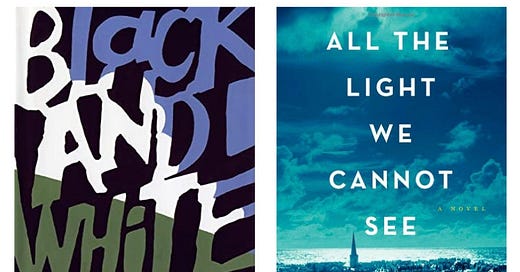Hey there, Lab Coats, Sweethearts of the Storybelly Lab, ‘bellies, and other affectionate names for all y’all. Late start today, but here I am with some thoughts on the unity of opposites and notebooks and on closing out April’s theme. Themes. Also Exercise #8.
Next week I might try incorporating the Lab within the Digest; I’m toying with how to best communicate and in what ways, without inundating subscribers with emails (not that you have complained, but I know how it is). If you have time/inclination, will you let me know, either in comments or Chat (or DM) how it’s going here for you? I’m closing in on a 90-day trial with my employer (me) and want a review: What works, what works best, what works least, as I am ready to prepare for month 4 and beyond. I’ll say a little, myself:
I’ve so enjoyed marrying what’s happening in my life with the Weekly Digest posts and Writers Lab posts, while working to keep the themes of home & history at the forefront, breaking those themes down further with craft, creativity, books, and community posts, following (loosely, I admit) Ops-Guru Zach’s “map” for Storybelly, which also includes Chats and Zooms, and even official workshops together, eventually (we’ll get there as we grow).
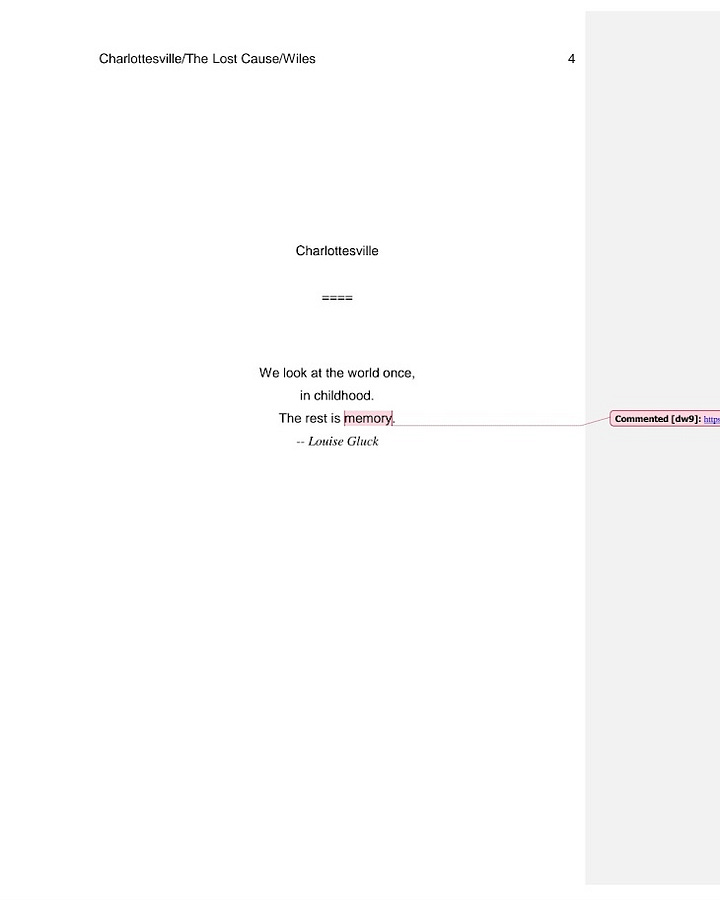
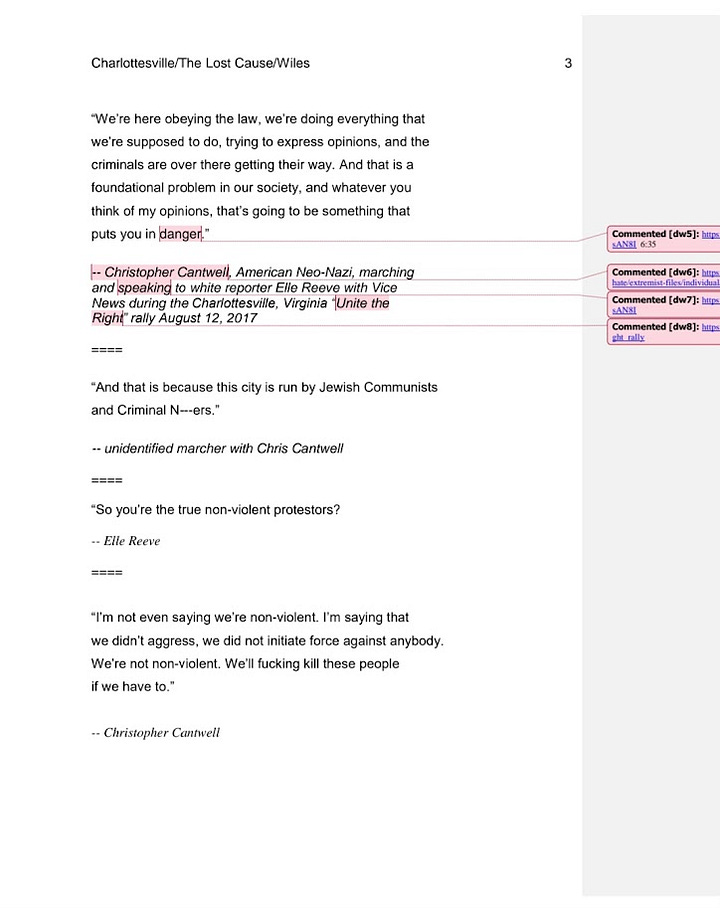
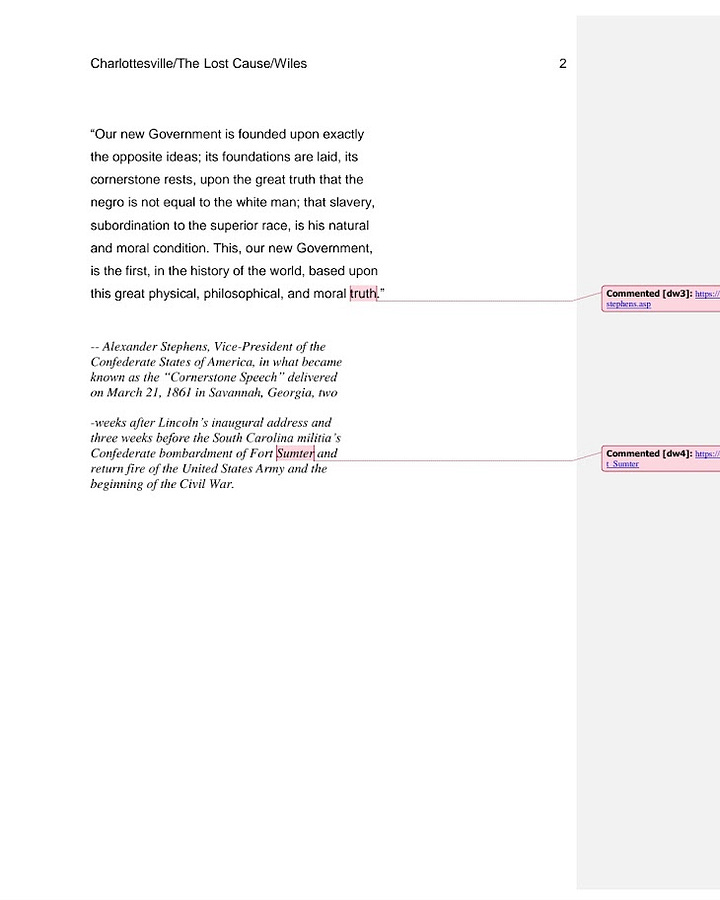
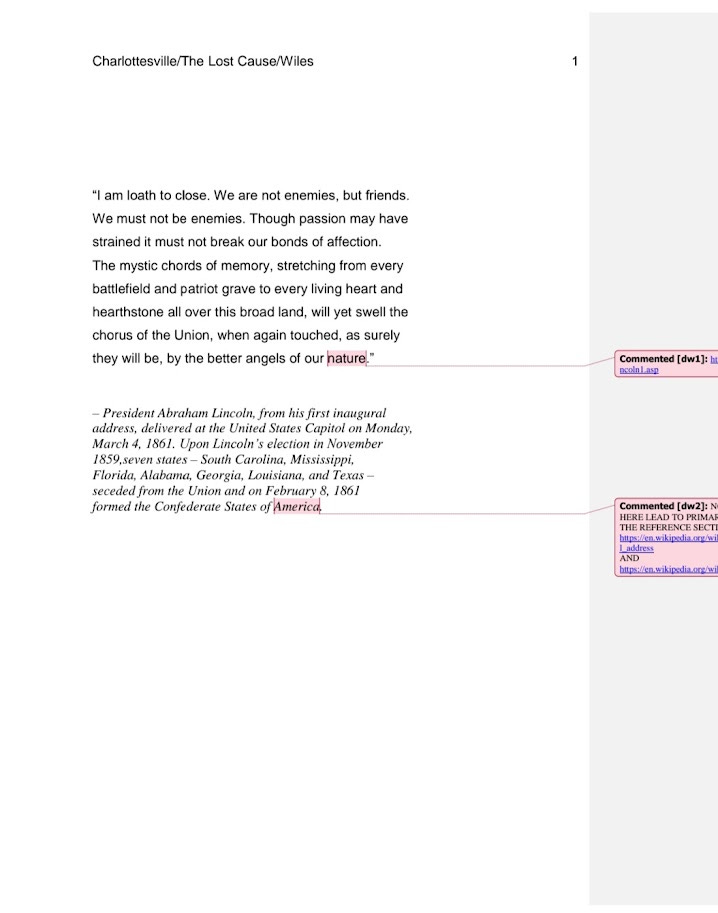
I’m also hard at work on finishing a draft of Charlottesville to hand in this year, and I wonder about excerpting some of it here in its own section (not on email), or including other work in progress, much of it ideas in my head, but like priming a pump, the writing brings up ideas, eh? And I’m looking for places to house them. You? Would you go for a paid-subscribers only (that’s you, Lab Coats) section at Storybelly that is just sharing our work in progress? It would not go out in email, would only live at the top of the Storybelly home page in its own section.
But enough thoughts on a grecian urn (wut), let’s get to the unity of opposites in stories, in… well… many things, including you. And me. And all living things.
As I mentioned in Monday’s Digest, the unity of opposites is a philosophical concept that suggests opposing forces or ideas are not separate but are instead interconnected and interdependent, that they exist together, in a state of tension and mutual influence.
According to our good friend Heraclitus (AH, this is why I am thinking of Grecian urns, I guess) the ancient Greek philosopher who, by all accounts I’ve read, was considered one depressed dude (“the weeping philosopher”), the world is constantly in flux, but the seeds of harmony and justice are held in strife.
We are always “becoming” but never “being,” isn’t that an interesting way to look at our work in progress? (Not to mention the US, all countries, the world, the galaxy, the universe, and our Selves; no wonder ol’ Heraclitus was so melancholy; it’s a lot to take in and wrastle with in 500BC or so, eh?)
Let’s stick to our work in progress for Exercise #8, though. We’re going to write about how “everything flows,” according to Heraclitus, or — was it he who said, "No man steps in the same river twice,” I think it was he.
Change. That is the name of the game here, through that unity of opposites. Hot and cold, light and dark, up and down, in and out, yes and no, forward and backward, fast and slow.
If you are a poetry fan, you know how much poetic forms benefit from the complementary nature of opposing forces; if you write or read fiction, you realize how vital the circle is to a story, and how the necessary tension we create in that story is inspired by the villain vs the hero, the allies vs the enemies, the tasks vs the stumbling blocks.
The change that is necessary to completing the circle is, to use Carl Jung’s psychology, a “coincidence of opposites” that somehow become integrated by some sort of alchemy that creates something new that didn’t exist before that story started — a character is changed, a situation is resolved, a journey is finished, etc. The tension created by the unity of opposites is what drives your story forward.
We’re talking here about the complexities of human relationships, identity, and the nature of reality. If you’re writing sci-fi or fantasy, you are steeped in a stew of opposites you are unifying, but no less is that your task with historical fiction or even (especially!) a rom-com, right? It’s all about the unity of opposites.
We have thousands of books for young readers about opposites, even one of mine, books that help children understand basic concepts as they start to order their world. The unity of opposites exists when we start telling stories that depend on those opposites. Two that come to mind just now are (for children and their adults) Black and White by David MacCaulay and (for adults) All The Light We Cannot See by Anthony Doerr.
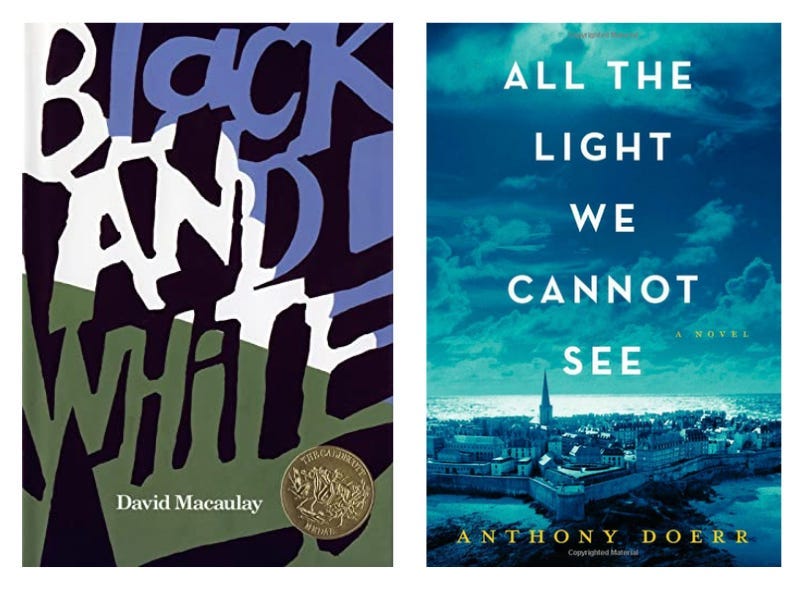
I’m thinking of these books because of the way they actively work to show you how “opposites attract” in a way that is masterful and integral to the story they tell. In other words, the opposites in each story rely on one another for their existence. The story doesn’t exist without the interplay of these opposing forces and their subsequent transformation. In both books, each opposite shapes and influences the other, over and over. Both books involve art and geography as opposites as well.
And it’s here that we encounter this week’s work. Call it play, if you prefer. I want you to experiment! To have fun! To create!
Feel free to upgrade your subscription to paid if you’d like to write with us this week, this month, or all year long, to Chat with us, to celebrate one another’s creativity and kvetch about whatever crosses your mind with this work — all voices are welcome. And I will make a CAKE.
THE ASSIGNMENT: EXERCISE #8

